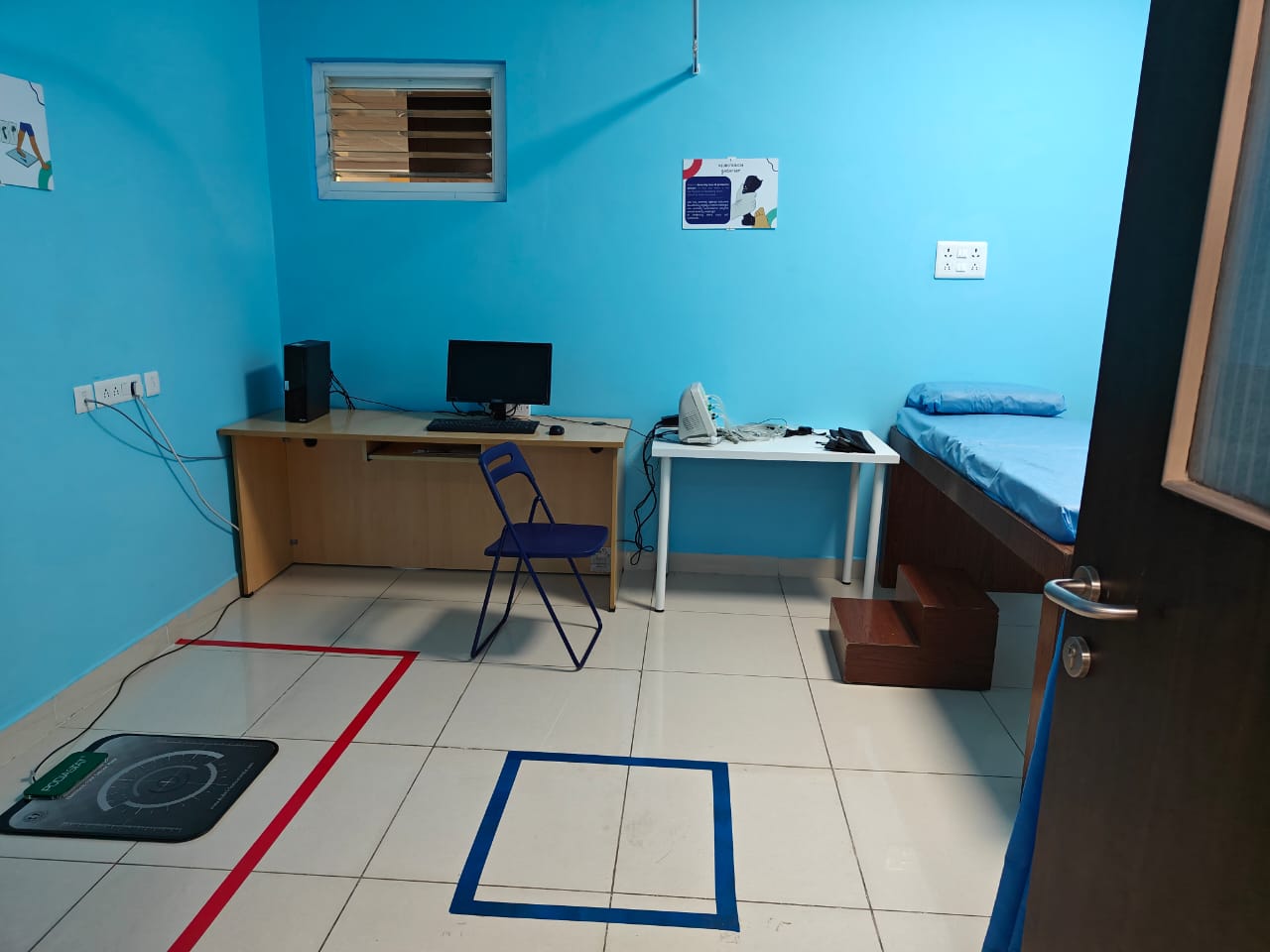Researchers from Karnataka create a special Digital Podiatry Clinic to predict diabetic foot ulcers with the aim to reduce amputations.

Researchers from Karnataka create a special Digital Podiatry Clinic to predict diabetic foot ulcers, reduce amputation, also help in creating a diabetic foot register. (Supplied)
Can you predict diabetic foot ulcers even before they happen? Thanks to Karnataka-based researchers, now you can!
Researchers from the Indian Institute of Science (IISc) in Benagaluru, and the Karnataka Institute of Endocrinology Research (KIER) have created a special Digital Podiatry Clinic — D-PoC — under the guidance of Dr K Ravi, Director of KIER, and Dr Belehalli Pavan, Head of the Department of Podiatry, KIER.
The clinic aims at early screening and diagnosis of diabetic foot complications, including Charcot foot, and will help in quantifying this deadly complication of diabetes.
Speaking to South First after the inauguration of D-PoC and also the launch of their self-offloading diabetic shoes, Dr Pavan, who has been tirelessly working towards reducing the rate of amputations caused by diabetic foot in the state, said, “D-PoC will be integrated with AI (Artificial Intelligence) to help create a ‘digital foot twin’, which will act as a signalling system to alert the patient of the upcoming possible complications that might happen.”
“This helps in giving sufficient time to a diabetic patient to take the necessary steps to prevent amputations.”
Diabetic foot refers to a range of complications that affect people who have diabetes. Primarily, it impacts the feet and the complications can arise mainly due to prolonged periods of high blood sugar levels, which can lead to two key issues: Neuropathy and peripheral vascular disease.
Neuropathy, or nerve damage, is diminished sensation in the feet, making it difficult for those affected to feel injuries like cuts or sores. This lack of sensation increases the risk of these minor injuries going unnoticed and becoming more severe.
Peripheral vascular disease, on the other hand, impedes blood flow, particularly in the limbs, thus slowing down the healing process of any wounds. This combination of reduced sensation and poor wound healing significantly elevates the risk of foot ulcers, infections, and more severe complications.
One of the most severe outcomes of diabetic foot is the development of foot ulcers — open wounds that are prone to infection and slow to heal due to poor circulation. In extreme cases, these ulcers can lead to infections that may progress to gangrene, necessitating amputation to prevent further spread.
Another complication, although less common, is Charcot foot, characterised by weakened bones in the foot that can fracture, altering the foot’s shape.
The management of diabetic foot involves diligent foot care, including regular inspections, maintaining good hygiene, and wearing suitable footwear.
It’s also crucial for individuals with diabetes to manage their blood sugar levels effectively and seek prompt medical attention for any foot-related issues, to minimise the risk of serious complications.
The burden of diabetic foot ulcers (DFUs) in India is significant. According to doctors, there are approximately 1,00,000 leg amputations each year in India due to diabetes-related problems. This highlights the substantial impact of diabetes on health and healthcare resources in India.
Dr Pavan said that the fact that India is the “Diabetic Capital of the World” presents a unique problem to the existing health infrastructure of India.
“Although the complications of diabetes like renal complications and cardiac complications have been getting due importance, the lesser-known complications like diabetic foot and eye complications are building up in the background and may pose as the ‘next public health crisis’ that India may be facing shortly,” he said.
In this context, Artificial intelligence and Machine Learning remain as two of the most promising tools that will change the way chronic diseases are screened and treated in the near future, he added.
The KIER-IISc collaborative research wing was setup to provide a platform for both the doctors as well as scientists to come up with solutions in treating and screening the complications of such chronic diseases.
Dr Pavan explained, “To this day, India does not have a dedicated ‘diabetic foot register’, which will help in formulating national programmes to tackle this deadly menace. D-PoC aims at correcting this lacuna by collecting data on the behavioural aspects and the main causative factors.”
The doctors recently also launched a new shoe called the “self-offloading diabetic footwear”. The first product of this collaboration has already been recognised by Biotechnology Industry Research Assistance Council (BIRAC) and the Biotechnology Ignition Grant has been awarded to get this product into the market.
Dr Pavan said, “This footwear has already been recognised by BIRAC and the Biotechnology Ignition Grant has been awarded to get this product into the market. This is going to be a big game changer for diabetics.”
Self-offloading diabetic footwear, developed by researchers at the Indian Institute of Science, is designed to self-regulate pressure distribution during walking.
This innovative footwear aims to help diabetic patients who may have an abnormal gait due to pain or numbness in their extremities, a condition that can lead to foot ulcers due to excessive pressure and friction from regular shoes.
The self-offloading shoes contain several arches that adjust their shape when excessive pressure is applied, thus distributing the pressure evenly across the foot.

Jul 26, 2024

Jul 26, 2024

Jul 26, 2024

Jul 26, 2024

Jul 26, 2024

Jul 26, 2024